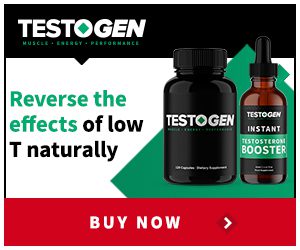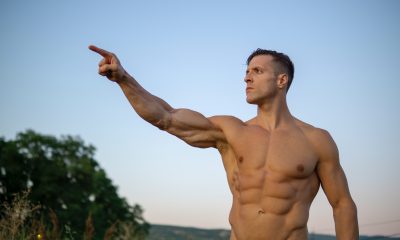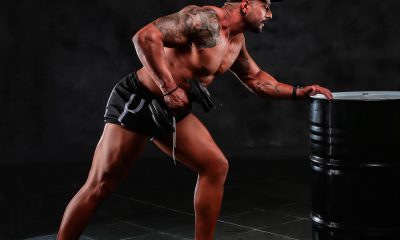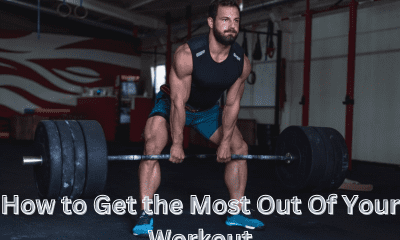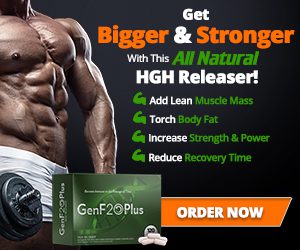Workout
50 Workouts Routines for the New Year
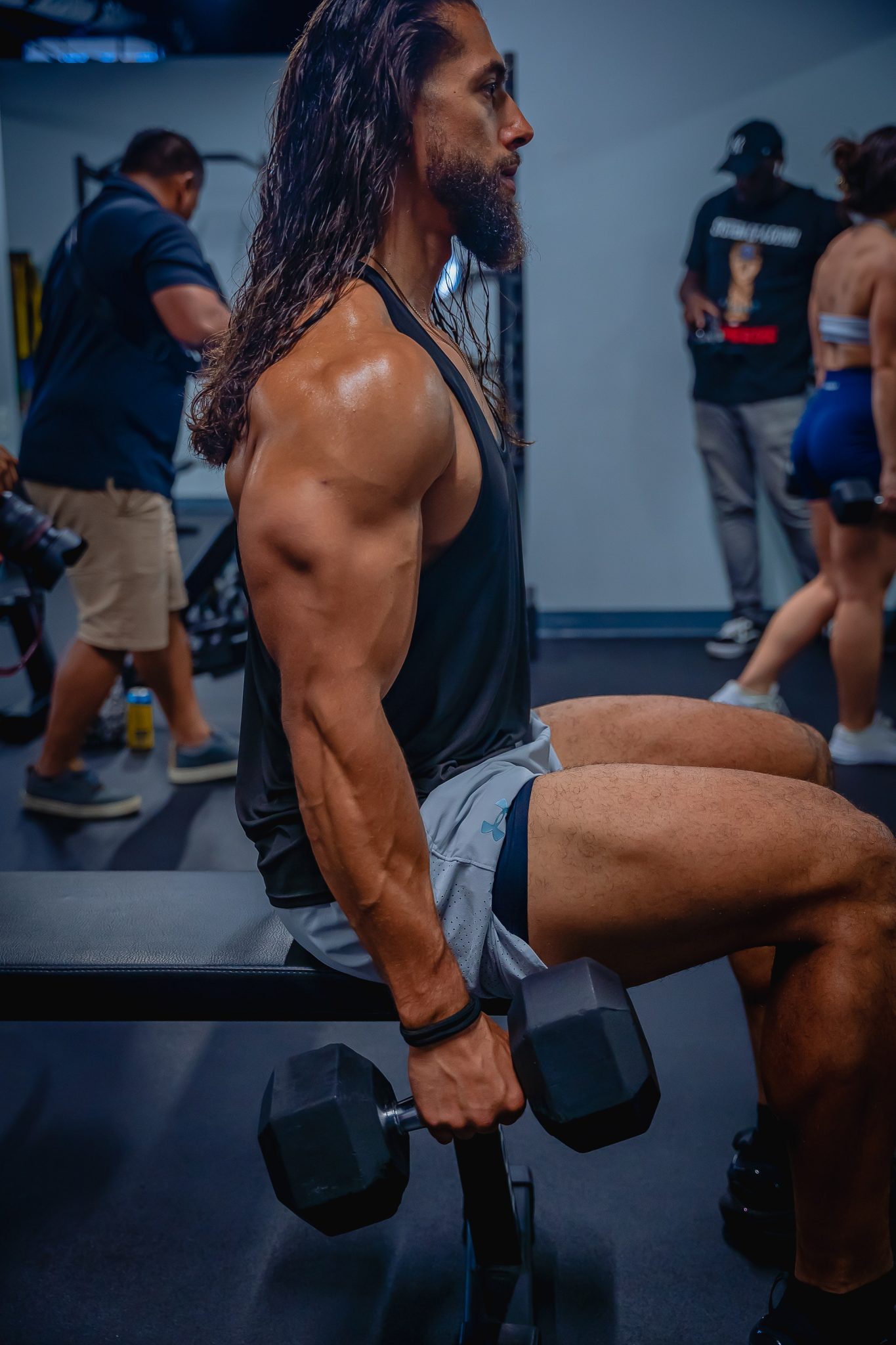
We forbid you from starting the new year without a solid plan. Your workout routine should be among your New Year's resolutions. Most importantly, you must shed a few pounds you may have added over the festive season. A workout plan is essential because it ensures you don't instantly kill yourself trying to achieve big results. We have prepared 50 workout routines for you to start the year on a high note.
Shoulder Workouts
The Boulder shoulder you desire will not come overnight. There are killer workouts out there that you can use to acquire shoulder caps that will turn heads.
Seated Dumbbell Shoulder Press Workout
This exercise is perfect for building lateral, anterior, and posterior deltoid muscles. Lifting two separate dumbbells is more effective for building shoulder muscles than lifting a machine. One side of your body is not working, thus helping you retain balance and fair distribution.
Sit on a low-back bench and hold a dumbbell with each hand at shoulder level. Keep your palms facing forward, your head straight up, then lift the dumbbells overhead towards each other.
Hi-Def shoulder workouts
If you suffer from sickly shoulders, you do not have any reason to worry further, for we have you covered. Enroll in a heavy start but still utilize the multiple speeds to work out your strength, size, and, finally, an excellent muscle burn.
Samantha Leete's shoulder workouts
A well-rounded physique is always determined by how strong, significant, and sculpted shoulders one has. The fitness model Samantha Leete workout is best recommended for you to build better muscles.
Shoulder–gain workouts
Many bodybuilders have ended up being disabled for overintricating shoulder training. Keep it simple and strategic with the IFBB pro Jake Alvarez to build impressive and balanced shoulders.
High-Volume Shoulder Builder
This workout method is recommended for you if you have a problem with your shoulder growth. Increase your training volume and frequency with this perfect muscle growth master plan.
Related Article:: CrossFit Workout – 8 Things to Know Before Your First
Legs Workouts for Women
Lying a firm foundation for your body is very critical. Check out these recommended workout collections for strong and good legs.
High-Frequency Legs Workouts:
This workout is essential when your legs need some extra focus. It's a program dedicated to toning your legs 3 days per week.
Stronger Legs Workouts.
Ashley Horner wants you out of your comfort zone and less weight than you have always been. Stronger women were made for leg day. Try this out and be amazed by the results.
Legs Workout for Men
Instead of following a one-size-fits-all workout on leg day, let your goals constitute your routine. Most workouts start with the best lower-body movements with a variation of squats. Work with a solid overall mass-building plan.
Three workouts to build bigger and stronger legs
With these double-duty workouts to deliver more muscle and exclusive strength, you will never wish to skip leg day again. Perform these workouts by focusing one workout on the quads and the other on the hamstring. You can also choose to work out these routines together.
Back workouts
You are assured of a balanced and symmetrical physique when you have a strong back. A few explicit workouts will help you gain a great back while maintaining it.
FST-7 back-and-abs workout
To easily widen your lats and have an impressive look, the best-recommended workout routine is the epic FST-7 workouts from pro trainer Hamny Rambod and men's physique champ Jeremy Buendia.
Must Read:: Best Diet Plan for Bodybuilders 2019
Optimum Back: Lat workout
It is one of the high-volume back workouts that will leave your back delts so pumped up that you may even have to walk sideways through the door.
Abel Albonetti's ultimate back workouts.
You must always have a strong back to round out your delt physique. Try this earnest, high-volume workout, increase in size, and build a piled back.
Back-and-forth back workouts.
This workout from Jim Stoppani's back-and-fourth programs includes about 8 row and pull-down variations. This workout routine will pull you exhausted and force your lungs to grow big and strong.
Wide-back, boulder shoulder workout
Chad Hollmer's killer back–and–shoulder routine workouts are popular among individuals who aim to build strength and have an appealing V-taper.
Arm Workouts
These workouts are recommended to help grow your arms bigger and take them to another level. They go beyond the regular dumbbell curls and triceps extensions.
Biceps and triceps workout- a triple threat arm assault
The trisect workout will pump up your biceps and thresh your triceps. If you desire bigger arms, this is the best workout for you.
AAA Workout: excellent Abs and Arms
To have unique arms and abs, follow and implement actress Alicia Ziegler’s training tips and workout routines; the outcomes will surely surprise you.
Chris Thompson's total arm workout
According to Chris Thompson, a workout of 30 minutes guarantees you a complete set of biceps, triceps, and cardio. You must only have a pair of dumbbells and an adjustable bench.
Sun's out/ guns out critical arm workouts.
Consider this the best time to work out when the exciting summer sun is high in the sky. If you still need to gain more biceps and sharpen your triceps. Adhere to these foolproof tips and follow up with workouts for jacked arms.
Must Read:: Ultimate Arms: How to Build Sleeve-Splitting Biceps and Triceps
Chest Workouts
If I am not mistaken, I am confident you desire a great set of pecs. Well, having the pecs is not an issue. Then, you must be ready to try these workouts for a remarkable result.
Steve Cook's chest-building workouts.
To build a more credible chest, you must think beyond your typical bench press. Before moving to laborious exercise, pre-hard exhaust your chest with some isolation sets. Finish with a blood-pumping circuit to pump up your muscle fibers.
Jason Wheat's robust MVP Chest Workout
Every MVP's workout list must build a muscular and big chest always at the top. Following Jason Wheat's extensive, pyramid-driven chest workouts will greatly help.
Big Bench, Bigger Chest Workouts
Possessing a great body is fantastic. Mark Bell will teach you how to maintain an incredible physique that you can also use to lift big weights,
Chest workouts for show and go.
If you can survive the onslaught, the superset-driven workouts of Abel and Kizzito Ejam will fix your chest for show and no go.
Glute Workouts
To build a booty that will always rock, here are five workouts to embrace,
Nicole Wilkin's butt and hip workouts
Although squats and lunges are fantastic, they are not enough for your butt to reach its full muscular potential, and you need the all-around workout from Olympic champion Nicole Wilkin.
Ashley Kaltwasser’s Iron buns workouts
For firm and rounder behind, reigning bikini Olympic queen Ashley Kaltwasser has some amazing bodybuilding secrets to share.
Related Article:: The 10 Best Fitness Products for 2020
Some of the home workouts that you should consider
You do not need to work in the gym at all times to get fit. You can have a great workout session in your home and still yield good results.
- 4 effective at-home weight-loss workouts.
- In the initial stage, the beginner at-home workout program focuses on getting the form down pat.
- Intermediate at-home workout plan; increase your workout intensity. These routines will include about two workouts weekly.
- Advanced at-home exercises: you must increase your muscles' stress to the total capacity.
- Efficient at-home cardio workouts; ensure you continually exercise these routines and only rest when necessary.
- Lais Deleon's at-home perfect booty workouts.
- Use your couch for at least 20 minutes to get a more robust and better behind.
- The ideal partner bodyweight workout
- With your training partner, you can start a challenge to help you grow and overcome even more advanced moves.
- Fitness-model bodyweight workout.
Hitting the gym is not very necessary. Just consider following the fitness model Jen Jewell's tips for a fantastic bodyweight workout session.
Full-body Workouts
These workouts are recommended if you don't have the time to train different muscles.
The no-excuses full-body workout
Try this tremendous full-body workout from former WBFF champ Chady, and your body will get into your most desired shape.
Bodyweight bodybuilding: the mass-building calisthenic workout
Join the workout movements with the suitable scheme and build your muscles like a bodybuilder or martial athlete.
Conclusion
Ensure your workout plan is within your limits. Most importantly, sit down at the end of each day and analyze your whole workout. Did you meet the desired goals? If not, what must be done to ensure your training is beneficial? But if a certain goal seems unrealistic, you can revisit it, even if it reduces training time. Don’t be afraid to take baby steps; bodybuilding's greatest men and women started there.
Bodybuilding
Top Video Games for Bodybuilders in 2025

There are several video games that can be great for bodybuilders, combining fitness and fun! Here are some of the best options:
Ring Fit Adventure (Nintendo Switch)
The game uses the Ring-Con and Leg Strap to guide you through various exercises and adventures. It's a fun way to get a full-body workout while playing a game.
Fitness Boxing 2: VR Boxing Remastered (PlayStation VR)
It offers a full-body boxing workout with a variety of punches and combos. It's a great way to improve your fitness while enjoying a virtual boxing experience.
Must Read: Marvel-Inspired Training Clothing on Amazon
Just Dance 2024
This popular dance game gets you moving to the beat with a variety of songs and dance routines. It's a fun way to burn calories and improve your coordination.
Zumba Fitness
Burn It Off (Nintendo Wii): This game offers a fun and energetic Zumba workout, perfect for those who enjoy dancing and want to get a good cardio workout.
Yoga for Beginners
If you're looking for a more relaxing workout, yoga games can help improve flexibility and reduce stress. Many of these games offer guided yoga sessions that you can follow along with.
Gym Tycoon
This game lets you build and manage your own gym, complete with various workout equipment and fitness classes. It's a great way to learn about different exercises and how to create effective workout routines.
The Sims 4: Fitness Stuff Pack
This expansion pack for The Sims 4 adds fitness equipment and activities to the game, allowing you to improve your character's fitness and join the athlete career.
Grand Theft Auto: San Andreas
While not a traditional fitness game, this classic game includes bodybuilding activities that can help your character gain muscle and improve fitness.
Knockout Home Fitness (Nintendo Switch)
This game offers a variety of boxing workouts that can help improve your strength and endurance.
Gym Simulator 24 (PC)
In this simulation game, you can build and manage your own fitness empire, creating workout routines and managing gym equipment.
Let's Get Fit (Nintendo Switch)
This game focuses on pure workouts, allowing you to set programs and follow along with digital trainers for a customized fitness experience.
Beat Saber (VR)
A popular VR game where you slash blocks to the beat of the music, providing an intense full-body workout.
Synth Riders (PlayStation VR)
This game combines freestyle dance and fitness, offering high-tempo tracks and multiplayer modes for a fun and energetic workout.
Yoga Master (PlayStation)
Designed by professional yoga coaches, this game offers a variety of yoga lessons and poses to improve flexibility and reduce stress.
Les Mills Bodycombat (PlayStation VR)
A martial arts-inspired workout game with a range of workout plans and coaching to keep you motivated.
OhShape Ultimate (PlayStation VR)
This game provides a full-body cardio workout with six sessions and two difficulty levels, designed to engage every part of your body.
These games offer a mix of cardio, strength, and flexibility workouts, making them great additions to your fitness routine.
Related Article: Supplemental Breast Milk for Bodybuilders
Beginners
14 Morning Run Safety Tips for Bodybuilding and Fitness

Morning Run can be a refreshing way to start the day, but it comes with its own set of challenges and safety concerns. For bodybuilders, who often have rigorous training schedules, it's crucial to take extra precautions to ensure a safe and effective workout. Here are some essential safety tips for bodybuilders who run in the wee hours of the morning:
Must Read: Here Is How to Know Your MRV
1. Plan Your Morning Run Route
Choose a well-lit, familiar route that is safe and free from heavy traffic. Avoid secluded areas and opt for routes with plenty of pedestrian traffic. If possible, run in parks or designated running trails.
2. Wear Reflective Gear
Visibility is key when running in the dark. Wear reflective clothing, shoes, and accessories to ensure that you are seen by drivers and other pedestrians. A headlamp or flashlight can also help you see the path ahead.
3. Inform Someone Before a Morning Run
Always let someone know your running route and expected return time. This way, if something goes wrong, someone will be aware and can alert authorities if necessary.
4. Carry Identification During Morning Run
Wear an ID bracelet or carry identification in your pocket. Include your name, emergency contact information, and any medical conditions or allergies. This information can be crucial in case of an emergency.
5. Stay Alert
Keep your senses sharp and stay aware of your surroundings. Avoid wearing headphones or earbuds, as they can distract you from potential dangers. Instead, listen to the sounds around you and be prepared to react quickly.
6. Run Against Traffic
When running on roads, always run against the direction of traffic. This allows you to see oncoming vehicles and gives you more time to react if needed.
7. Vary Your Routine
Don't run the same route at the same time every day. Varying your route and schedule can help prevent potential attackers from predicting your movements.
8. Carry a Personal Safety Device
Consider carrying a personal safety device, such as a whistle or pepper spray. These items can help you defend yourself if you encounter a threat.
9. Stay Hydrated
Even though it's early in the morning, your body still needs hydration. Drink water before and after your run, and consider carrying a small water bottle with you.
10. Warm Up Properly for Morning Run
Before you start running, take a few minutes to warm up. Stretching and light exercises can help prevent injuries and prepare your muscles for the workout ahead.
11. Dress Appropriately
Wear moisture-wicking clothing to keep cool and dry. Layering is essential, especially in colder months, so you can adjust your clothing as you warm up.
12. Check the Weather
Before heading out, check the weather forecast. Avoid running in extreme conditions, such as heavy rain, thunderstorms, or extreme heat. If conditions are unsafe, consider an indoor workout instead.
13. Trust Your Instincts
If something doesn't feel right, trust your instincts and find a safer location. Your safety is the top priority, and it's better to be cautious than sorry.
14. Post-Run Routine
After your run, take time to cool down and stretch. This helps reduce muscle soreness and improves flexibility. Also, refuel with a healthy breakfast to replenish your energy levels.
Read Also: 10 Best Powerlifting Steroid Cycles
Analysing Your Morning Run Route
Running in unsafe areas can put you at risk, especially in the early morning when visibility is low. Here are some routes to avoid:
Secluded or Remote Areas
Avoid running in places that are far from help, such as remote trails or rural roads. These areas can be dangerous if you encounter wildlife or if you get injured and no one is around to help.
Check High-Crime Areas Before Morning Run
Stick to well-lit, populated areas and avoid neighborhoods with high crime rates. If you're unsure about the safety of an area, it's best to find an alternative route.
Avoid Unlit Roads During Morning Run
Running on roads without streetlights can be hazardous, especially if there's no sidewalk. Cars might not see you, and it's harder to see potential hazards on the road.
Busy Highways or Interstates
Avoid running on or near highways where traffic is fast-moving and there's little room for pedestrians. The noise and exhaust can also be harmful.
Construction Zones
Be cautious around areas with ongoing construction. There might be debris, uneven surfaces, and heavy machinery that can pose risks.
Blind Curves and Hills
Routes with sharp turns or steep hills can be dangerous because you can't see oncoming traffic. It's safer to choose routes with good visibility.
Areas with Poor Drainage Aren't Safe for Morning Run
Avoid routes that are prone to flooding or have poor drainage. Wet, slippery surfaces can lead to falls and injuries.
Unfamiliar Trails
Stick to trails you know well. Unfamiliar trails can be tricky to navigate, and you might get lost or encounter unexpected obstacles.
Overall
By following our morning run safety tips, you enjoy the benefits while minimizing the risks. Remember, safety should always come first, and taking these precautions can help ensure a safe and enjoyable workout experience.
Related Article: How to Regulate Your Food Quantity
Bodybuilding
Primal Movements: Our Ultimate Guide for Maximum Results
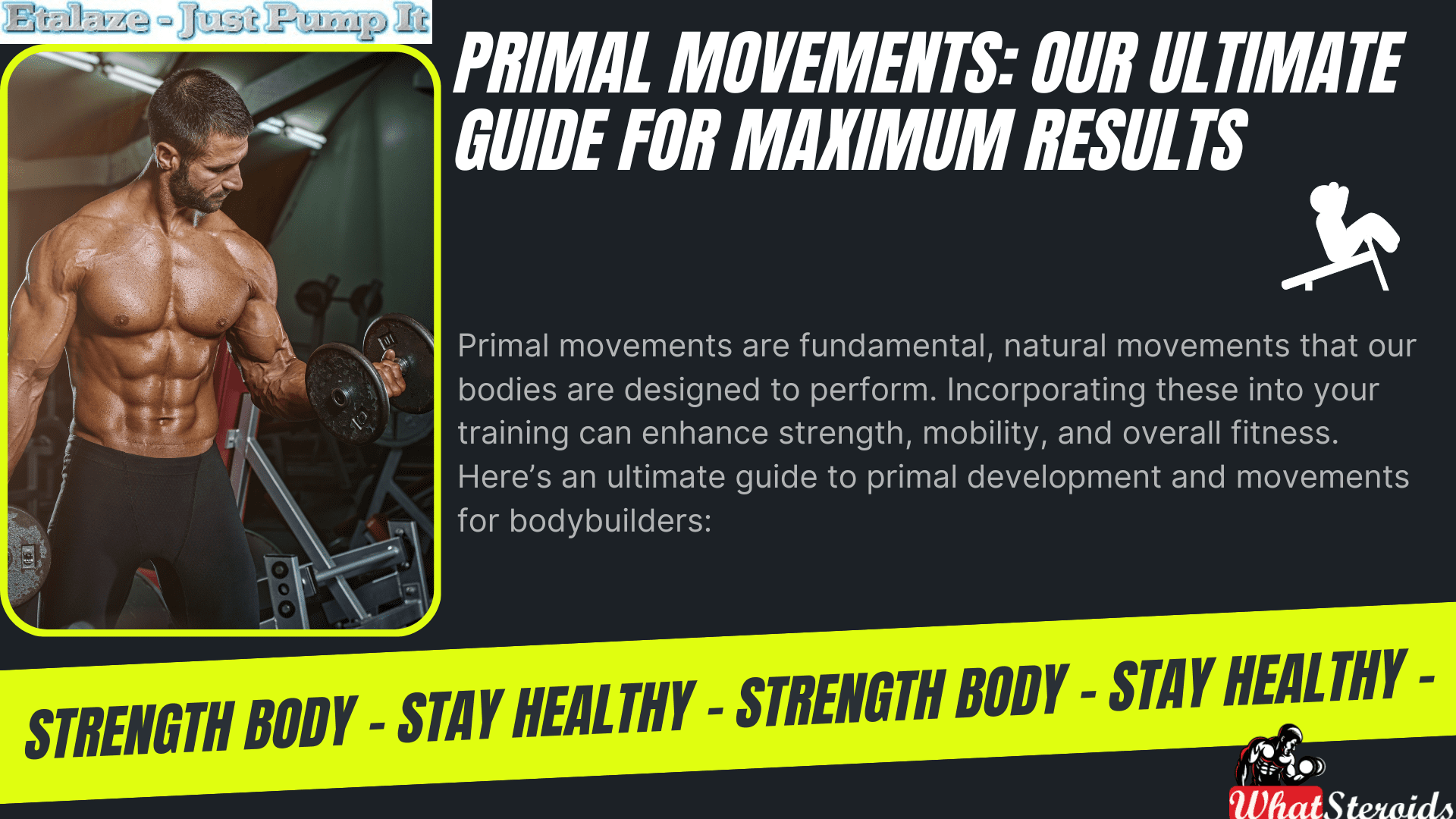
Primal movements are fundamental, natural movements that our bodies are designed to perform. Incorporating these into your training can enhance strength, mobility, and overall fitness. Here’s an ultimate guide to primal development and movements for bodybuilders:
 Buy Cut Long 300 by Dragon Pharma
Buy Cut Long 300 by Dragon Pharma
Understanding Primal Movements
Primal movements are basic, functional movements that mimic the natural actions humans have performed for thousands of years. These movements are essential for developing a strong, balanced, and resilient body. They can be categorized into seven primary patterns:
Related Article: How Much Do You Know About B-AET? A Fat Burner You’ve Been Missing
- Push
- Pull
- Squat
- Lunge
- Hinge
- Rotate
- Gait (Locomotion)
The Seven Primal Movement Patterns
Push
Description: Involves moving a weight or resistance away from your body.
Examples: Push-ups, bench press, overhead press.
Muscles Worked: Chest, shoulders, triceps.
Pull
Description: Involves drawing a weight or resistance towards your body.
Examples: Pull-ups, rows, bicep curls.
Muscles Worked: Back, biceps, forearms.
Squat
Description: A fundamental lower-body movement where you lower your hips from a standing position and then stand back up.
Examples: Bodyweight squats, barbell squats, goblet squats.
Muscles Worked: Quadriceps, hamstrings, glutes, calves.
Lunge
Description: A single-leg movement that involves stepping forward, backward, or to the side and lowering your hips.
Examples: Forward lunges, reverse lunges, lateral lunges.
Muscles Worked: Quadriceps, hamstrings, glutes, calves.
Hinge
Description: Involves bending at the hips while keeping a neutral spine.
Examples: Deadlifts, kettlebell swings, hip thrusts.
Muscles Worked: Hamstrings, glutes, lower back.
Rotate
Description: Involves twisting or rotating the torso.
Examples: Russian twists, woodchoppers, cable rotations.
Muscles Worked: Obliques, abdominals, lower back.
Gait (Locomotion)
Description: Involves movements that propel the body forward.
Examples: Walking, running, crawling, bear crawls.
Muscles Worked: Full body, with emphasis on legs and core.
Benefits of Primal Movements
Functional Strength: Primal movements enhance your ability to perform everyday tasks efficiently and safely.
Improved Mobility: These movements promote flexibility and range of motion, reducing the risk of injury.
Balanced Development: By working multiple muscle groups, primal movements ensure balanced muscle development.
Core Stability: Many primal movements engage the core, improving overall stability and strength.
Increased Caloric Burn: Compound movements like these burn more calories, aiding in fat loss and conditioning.
Incorporating Primal Movements into Your Training
Warm-Up: Start with dynamic stretches and light cardio to prepare your body.
Compound Exercises: Focus on compound exercises that incorporate multiple primal movements.
Progressive Overload: Gradually increase the weight or resistance to continue making gains.
Variety: Mix up your routine to prevent plateaus and keep your workouts interesting.
Recovery: Ensure adequate rest and recovery to allow your muscles to repair and grow.
Sample Primal Movement Workout
Warm-Up: 5-10 minutes of light cardio and dynamic stretching.
Workout:
Push: 3 sets of 10-12 reps of push-ups or bench press.
Pull: 3 sets of 10-12 reps of pull-ups or rows.
Squat: 3 sets of 10-12 reps of bodyweight or barbell squats.
Lunge: 3 sets of 10-12 reps per leg of forward or reverse lunges.
Hinge: 3 sets of 10-12 reps of deadlifts or kettlebell swings.
Rotate: 3 sets of 15-20 reps of Russian twists or cable rotations.
Gait: 3 sets of 30-60 seconds of bear crawls or sprints.
Cool-Down: 5-10 minutes of static stretching and deep breathing exercises.
1. Warm-Up and Mobility Drills
Start your workout with primal movement-based warm-ups to prepare your body. For example:
- Dynamic stretches: Incorporate lunges with a twist, leg swings, and arm circles.
- Mobility drills: Include exercises like hip circles, cat-cow stretches, and thoracic rotations.
2. Compound Exercises
Add primal movements as the core of your workout. Here’s how you can structure it:
- Push Day: Combine bench presses with push-ups.
- Pull Day: Mix pull-ups with rows.
- Leg Day: Integrate squats and lunges with deadlifts.
3. Supersets and Circuits
Create supersets or circuits that include primal movements:
- Superset Example: Pair squats with pull-ups or push-ups with lunges.
- Circuit Example: Rotate through exercises like kettlebell swings, bear crawls, and Russian twists with minimal rest.
4. Functional Training Days
Dedicate one or two days a week to functional training focused on primal movements:
Sample Functional Workout
-
- Warm-Up: 5 minutes of dynamic stretching.
- Circuit: 3 rounds of:
- 10 push-ups
- 10 pull-ups
- 15 squats
- 10 lunges per leg
- 15 kettlebell swings
- 20 Russian twists
- 30 seconds of bear crawls
- Cool-Down: 5 minutes of static stretching.
5. Active Recovery
Use primal movements on active recovery days to promote mobility and flexibility:
- Activities: Light yoga, walking, or gentle bodyweight exercises like lunges and squats.
6. Progressive Overload
Gradually increase the intensity of primal movements by adding weights or resistance bands:
- Example: Start with bodyweight squats, then progress to goblet squats, and eventually barbell squats.
7. Listen to Your Body
Pay attention to how your body responds to these movements and adjust accordingly:
- Modify: If a movement feels too challenging, modify it to suit your fitness level.
- Rest: Ensure you’re getting adequate rest and recovery to prevent overtraining.
Read More: Cellular Alchemy to Restore Testosterone Levels
Sample Weekly Routine for Primal Movements
Monday: Push Day
- Bench Press
- Push-Ups
- Overhead Press
Tuesday: Pull Day
- Pull-Ups
- Rows
- Bicep Curls
Wednesday: Leg Day
- Squats
- Lunges
- Deadlifts
Thursday: Functional Training
- Circuit of primal movements (as outlined above)
Friday: Active Recovery
- Light yoga or walking
Saturday: Full-Body Workout
- Combination of push, pull, squat, and hinge movements
Sunday: Rest Day
By incorporating these primal movements, you’ll enhance your functional strength, mobility, and overall fitness. If you have any specific goals or need further customization, feel free to ask! Happy training.
For optimal performance in primal movements before a bodybuilding competition, consider these supplements:
Pre-Workout Supplements: These can provide energy and enhance performance. Look for products containing creatine, nitric oxide stimulators, and caffeine.
Post-Workout Supplements: Essential for recovery, including protein powders, BCAAs (Branched-Chain Amino Acids), and multivitamins.
Fat Burners and Metabolizers: These can help in reducing body fat while maintaining muscle mass. Ingredients like green tea extract and L-carnitine are popular.
Adaptogens: Supplements like ashwagandha and rhodiola rosea can help manage stress and improve endurance.
Conlusion
Primal movements, which include squatting, lunging, hinging, twisting, walking, pushing, and pulling, benefit from a strong foundation of functional strength and mobility. Ensuring your body is well-nourished and recovered will help you perform these movements effectively.
Incorporating primal movements into your bodybuilding routine can lead to significant improvements in strength, mobility, and overall fitness. By focusing on these fundamental patterns, you can build a well-rounded, resilient body that performs well both in and out of the gym.
-

 Steroids2 years ago
Steroids2 years agoShavers and Other Body Grooming Equipment for Bodybuilders In 2023
-

 Steroids2 years ago
Steroids2 years agoChatGPT and Other Avenues to Find Great Bodybuilding Coaches
-

 Steroids2 years ago
Steroids2 years agoBest Oil Recommendations Before Competition for Subtle Shimmer
-

 Steroids2 years ago
Steroids2 years agoPowerlifting Vs Power Building: Find Out the Big Difference and When to Shift Between the Two
-

 Nutrition1 year ago
Nutrition1 year agoEverything Nutritional Food: What’s Too Much Or Too Little
-

 Bodybuilding Products1 year ago
Bodybuilding Products1 year agoTelmisartan In Bodybuilding: An Expert’s Advice
-

 Anabolic Steroids1 year ago
Anabolic Steroids1 year agoLegality of Anabolic Steroids In Latin America
-

 Beginners2 years ago
Beginners2 years agoTren Cycle for Beginners
-

 Bodybuilding1 year ago
Bodybuilding1 year agoList of FDA-Approved Peptides
-

 Bodybuilding1 year ago
Bodybuilding1 year agoChia Seeds in A Bodybuilder’s Diet: An Expert’s Advice
-

 Bodybuilding2 years ago
Bodybuilding2 years agoCompetition Prep Cycle for Pro Bodybuilders
-

 Bodybuilding8 months ago
Bodybuilding8 months agoPrimal Movements: Our Ultimate Guide for Maximum Results
-

 Anabolic Steroids9 months ago
Anabolic Steroids9 months agoJoint Stiffness: How to Manage It While on AAS
-

 Steroids12 months ago
Steroids12 months agoAnadrol Cycle: Benefits, Doses, Alternatives, etc.
-

 Bodybuilding8 months ago
Bodybuilding8 months agoHow Effective is Bone Broth for Recovery?
-

 Steroids10 months ago
Steroids10 months agoOmnitope (Oxytocin)
-

 Bodybuilding1 year ago
Bodybuilding1 year agoHow Much Is Too Much Cardio? Understanding Heart Rate Zones
-

 Anabolic Steroids11 months ago
Anabolic Steroids11 months agoHow Much Do You Know About B-AET? A Fat Burner You’ve Been Missing
-

 Steroids9 months ago
Steroids9 months agoSleeping Positions for Effective Muscle Recovery
-

 Bodybuilding1 year ago
Bodybuilding1 year agoCalorie Dumping: A Bodybuilder’s Guide
-

 Product Reviews11 months ago
Product Reviews11 months agoTop Vitamins for Skin Health
-

 Bodybuilding8 months ago
Bodybuilding8 months ago2nd Edition of Natural Bodybuilding Competition Facts
-

 Bodybuilding1 year ago
Bodybuilding1 year agoDemystifying Hypertrophy Training
-

 Bodybuilding8 months ago
Bodybuilding8 months agoAre Nootropics a Better Option to AAS?
-

 Steroids11 months ago
Steroids11 months agoMajor Bodybuilding Peptides Explained



